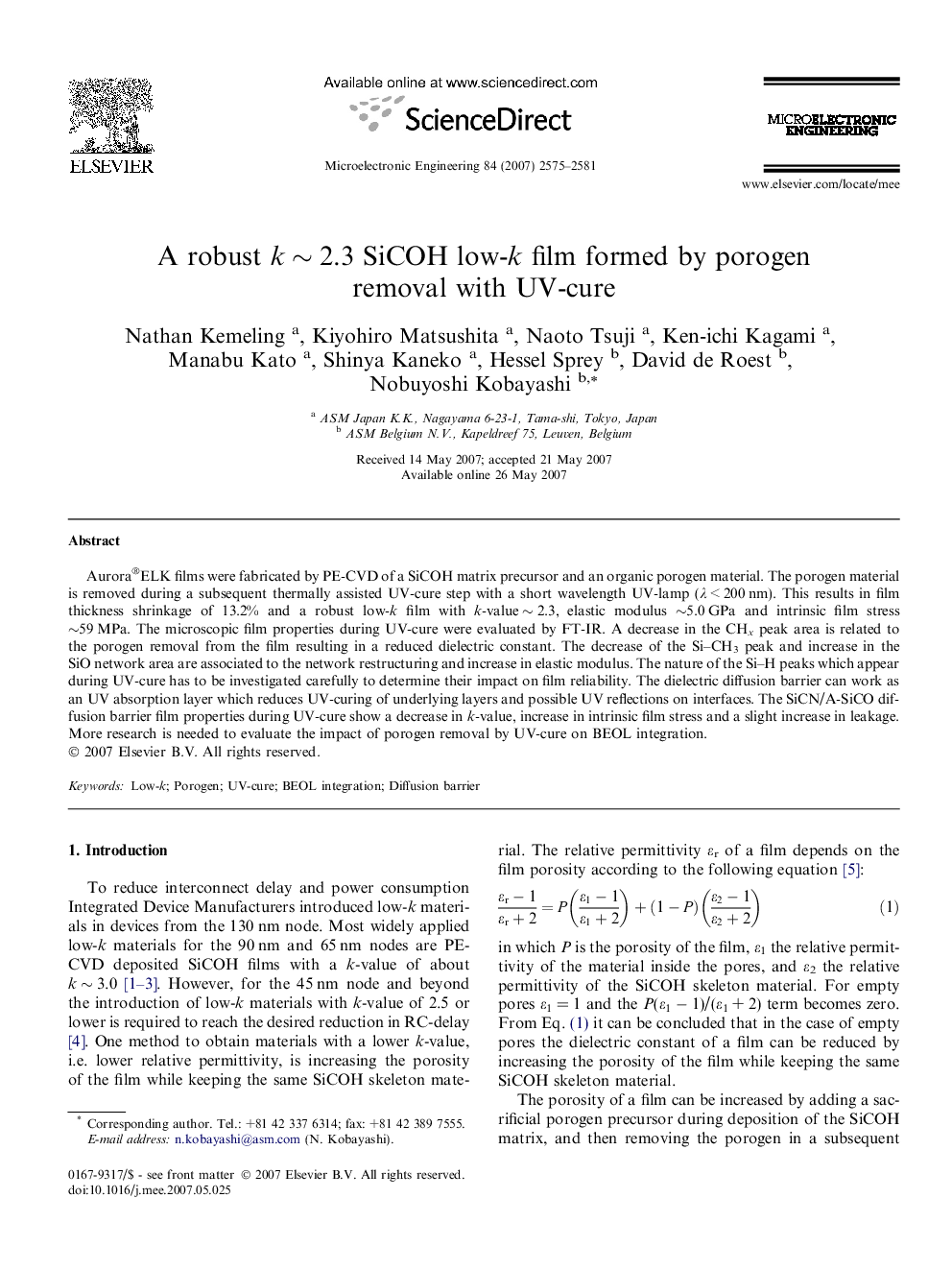| Article ID | Journal | Published Year | Pages | File Type |
|---|---|---|---|---|
| 540787 | Microelectronic Engineering | 2007 | 7 Pages |
Aurora®ELK films were fabricated by PE-CVD of a SiCOH matrix precursor and an organic porogen material. The porogen material is removed during a subsequent thermally assisted UV-cure step with a short wavelength UV-lamp (λ < 200 nm). This results in film thickness shrinkage of 13.2% and a robust low-k film with k-value ∼ 2.3, elastic modulus ∼5.0 GPa and intrinsic film stress ∼59 MPa. The microscopic film properties during UV-cure were evaluated by FT-IR. A decrease in the CHx peak area is related to the porogen removal from the film resulting in a reduced dielectric constant. The decrease of the Si–CH3 peak and increase in the SiO network area are associated to the network restructuring and increase in elastic modulus. The nature of the Si–H peaks which appear during UV-cure has to be investigated carefully to determine their impact on film reliability. The dielectric diffusion barrier can work as an UV absorption layer which reduces UV-curing of underlying layers and possible UV reflections on interfaces. The SiCN/A-SiCO diffusion barrier film properties during UV-cure show a decrease in k-value, increase in intrinsic film stress and a slight increase in leakage. More research is needed to evaluate the impact of porogen removal by UV-cure on BEOL integration.
